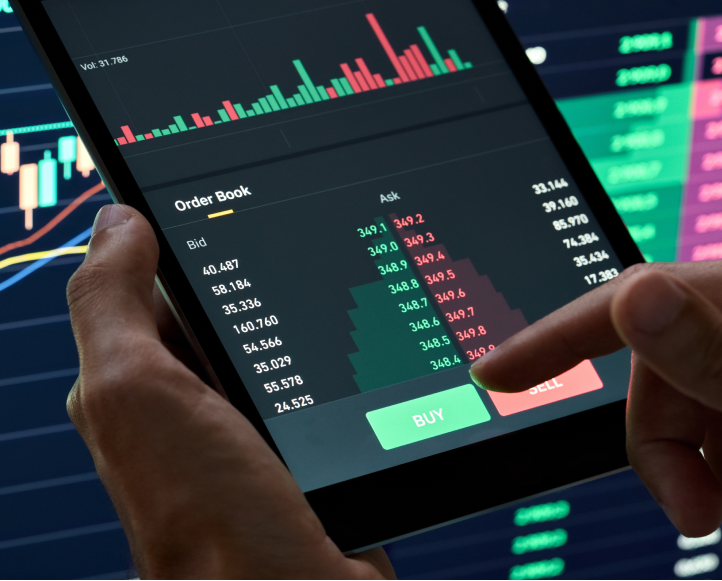
Crypto Trading Order Types Explained
In the fast-paced world of cryptocurrency trading, understanding the different types of trading orders is crucial for both new and experienced traders. Each order type serves a unique purpose and can greatly influence your trading results. In this article, we will explore the various crypto trading order types, their functionalities, and how to effectively implement them in your trading strategy. For more insights in the field, Crypto Trading Order Types visit website to learn more.
1. Market Orders
A market order is the most straightforward type of trading order. When you place a market order, you are instructing your broker or exchange to buy or sell a cryptocurrency at the current market price. This type of order guarantees that your trade will be executed, but it does not guarantee the price at which it will be executed.
Market orders are useful for traders who want to quickly enter or exit a position without worrying too much about the price. However, during periods of high volatility, the executed price can differ significantly from the last quoted price, which is known as slippage.
2. Limit Orders
A limit order allows you to set a specific price at which you want to buy or sell a cryptocurrency. When you place a limit order, the trade will only be executed if the market reaches your specified price. This order type provides control over the price at which your trade is executed, reducing the risk of slippage.
Limit orders are particularly useful for traders who have a specific entry or exit point in mind. For example, if you believe that Bitcoin is overvalued at its current market price, you can place a limit order to sell at a higher price point.
3. Stop Orders
Stop orders, also known as stop-loss or stop-limit orders, are designed to limit potential losses or protect profits on a trade. A stop order becomes a market order once the specified stop price is reached. For example, if you own an asset and want to sell it if it drops to a certain price, you can set a stop order at that price. If the market hits your stop price, the stop order is triggered, and your position is sold at the current market price.
This type of order is crucial for risk management, allowing traders to mitigate potential losses without having to constantly monitor the market.
4. Stop-Limit Orders
A stop-limit order combines the features of both stop orders and limit orders. When the specified stop price is reached, the stop-limit order becomes a limit order that will only be executed at your designated limit price or better. This provides the trader with more control over the price at which their trade is executed, helping to avoid the potential pitfalls of a market order during high volatility.

For instance, if you have a Bitcoin position and want to limit your losses, you might set a stop order to activate at $30,000, and a limit order to sell at $29,500. If Bitcoin drops to $30,000, your limit order will then trigger, but only at your specified limit price.
5. Trailing Stop Orders
Trailing stop orders are a dynamic tool that allows traders to set a stop order that “trails” the market price. As the price of the cryptocurrency moves in a favorable direction, the stop price adjusts accordingly. However, if the price moves against the position, the trailing stop order remains static, locking in profits or limiting losses.
For example, if you have a trailing stop order set at $1,000 below the market price, as the price increases, the trailing stop will also move up, maintaining that $1,000 margin. This order type is particularly useful in trending markets, as it enables traders to capitalize on upward momentum while still protecting themselves from downturns.
6. Fill or Kill Orders
A fill or kill (FOK) order is a type of order that must be executed in its entirety immediately or not at all. This type of order can be useful in volatile markets where the price may change rapidly, and the trader wants to ensure that the whole position is filled at once.
For instance, if you place a fill or kill order to buy 100 ETH at $2,000, the order will only be filled if all 100 ETH can be purchased at that price immediately. If the price moves up or there isn’t enough liquidity to fill the order, it will be canceled.
7. Good Till Canceled (GTC) Orders
A good till canceled (GTC) order remains active until it is either executed or explicitly canceled by the trader. This type of order can be beneficial for traders who want to set a limit order and leave it open without constantly monitoring the market.
It’s important to note, however, that some exchanges impose a maximum duration on GTC orders, such as 30 or 60 days, after which the order will be automatically canceled.
Conclusion
Understanding the different crypto trading order types is essential for developing an effective trading strategy. By leveraging the unique functionalities of market, limit, stop, stop-limit, trailing stop, fill or kill, and good till canceled orders, traders can enhance their trading effectiveness and manage risk more efficiently. Each order type serves a specific purpose, and choosing the right one can make a significant difference in your trading results.
As you continue your trading journey, be sure to practice using these orders and tailor them to your individual trading style and objectives. Overall, informed decision-making when it comes to order types will empower you as a trader in the dynamic world of cryptocurrency.


 Heavens Las vegas Greeting Provide Score fifty Free Spins No Chicago slot for real money deposit within the 2025
Heavens Las vegas Greeting Provide Score fifty Free Spins No Chicago slot for real money deposit within the 2025
Leave a Comment... Discuss!